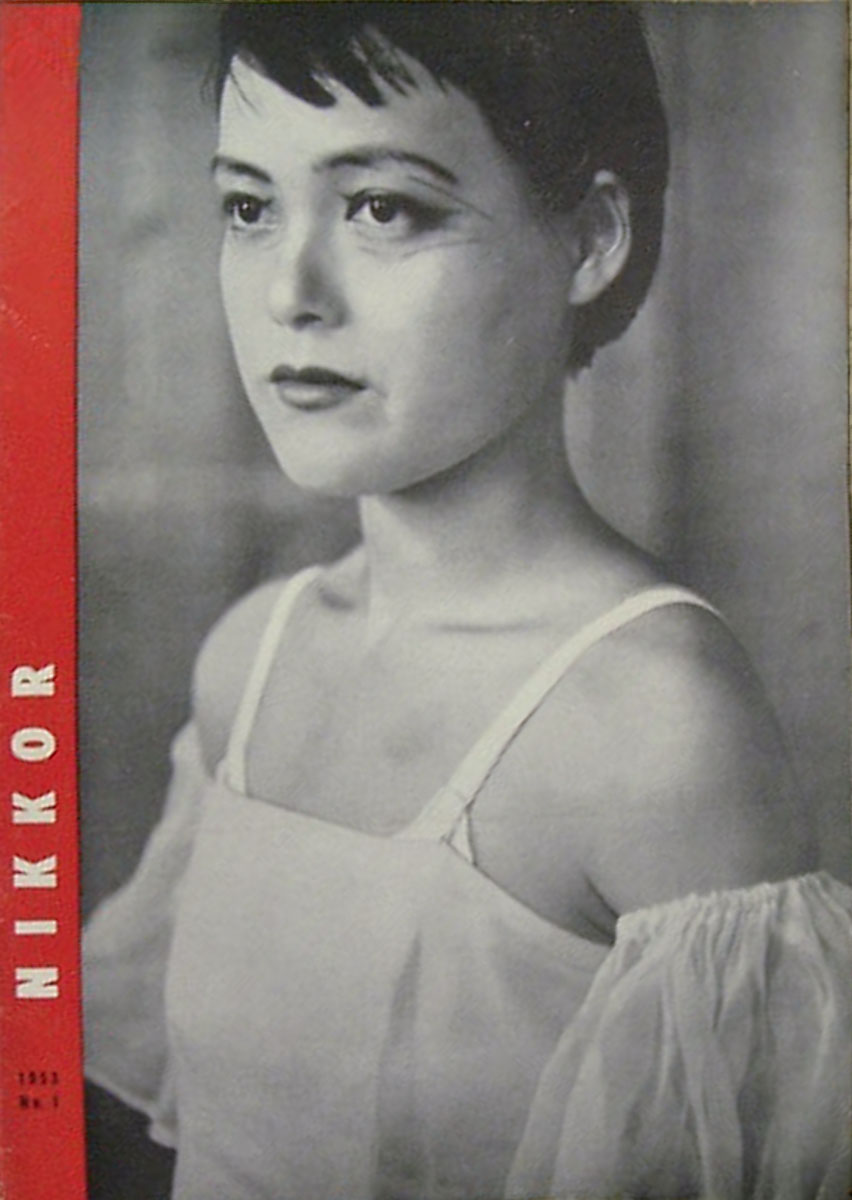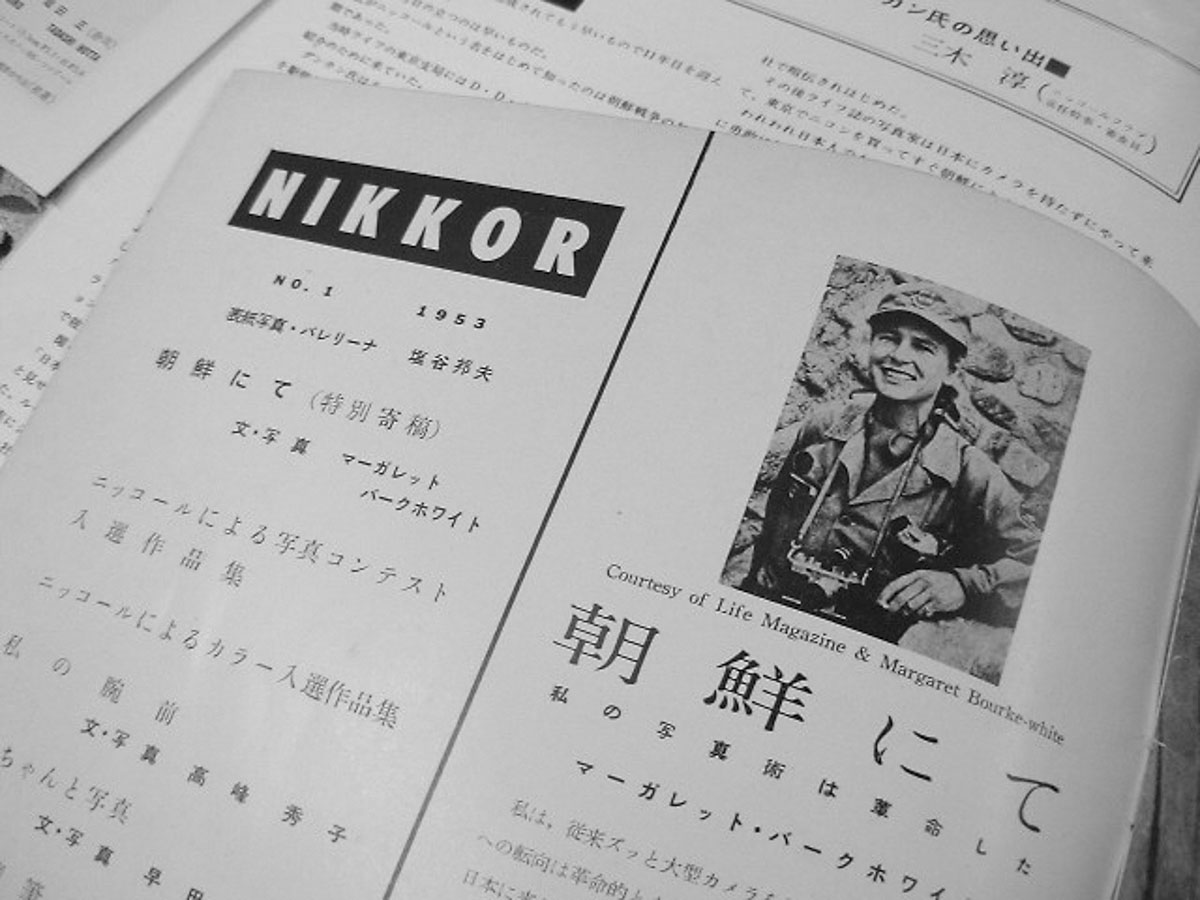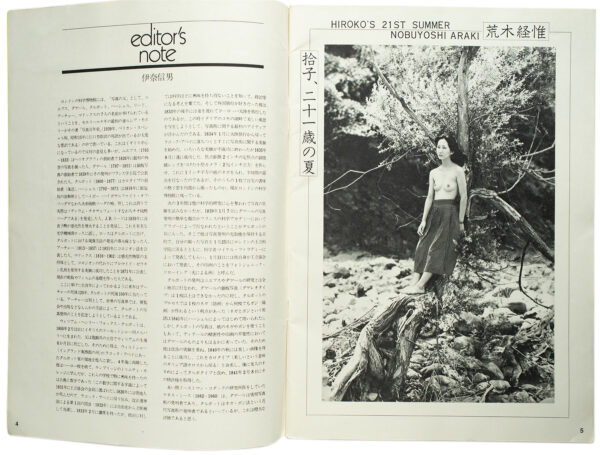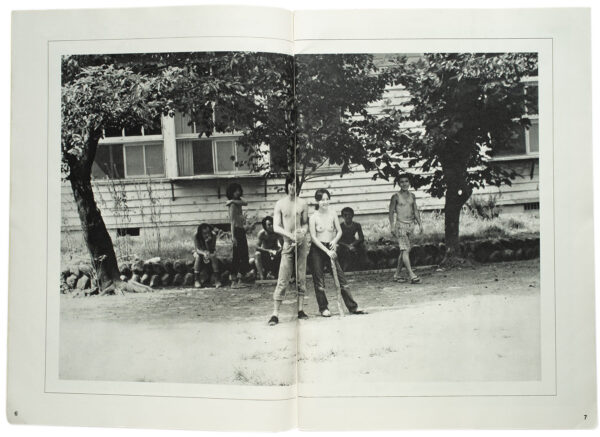Nikkor Club Kaihō (Bulletin/Newsletter) ニッコールクラブ会報
1953-present
Quarterly
Publisher: Nikkor Club, Tokyo
Editor: Nikkor Club Editorial Office.
In the mid-1950s, all the large camera manufacturers launched camera clubs and PR magazines, providing their users with product information, contests and also functioned as a platform for new photography. Amateur photography was fuelled by the photo magazines, photo contests and the many camera clubs that existed in various parts of Japan. The monthly photo contests in camera magazines were not only a place for amateurs to improve their skills, but also could serve as a gateway to becoming a professional photographer.
Nikkor Club was founded in 1952 by then-Nippon Kōgaku Kōgyo ( later Nikon) president Nagaoka Masao, and the photographers Miki Jun, Kimura Ihei, Domon Ken and Kamekura Yusaku, with the intent of giving lens-lovers a means of mutual friendship and international exchange. The name ‘Nikkor Club’ was chosen and not ‘Nikon Club’, because Nippon Kōgaku had a large number of lenses for use with other companies' cameras, including Leica mount, Contax mount, Exacta mount, among others, so ‘Nikkor Club’ would not exclude those users. The idea was to do something for the increasing number of these Nikkor lens users. Due to their outstanding quality, in the 1950s Nikkor lenses gained a high reputation and were trusted by many photographers of the same genre, and became popular among famous photographers around te world. As interest in Nikon cameras and Nikkor lenses also grew among ordinary amateurs, the Nikkor Club was formed with the objectives of promoting friendship among Nikkor lens users and promoting exchanges with international photography organizations.
In 1953 the first issue of the Nikkor Club was published; “Nikkor” no.1 The editorial board includes Kimura Ihei, Domon Ken, Nishiyama Kiyoshi, Kamekura Yusaku, Ozaki Sankichi and Miki Jun. Kamekura Yusaku is one of Japan's leading designers. With a cover of A4 size, the bulletin was published in six issues until no.6 in 1956, and each issue introduced the works by Nikkor lenses and Nikon products. The first issue included a piece by Margaret Bourke-White, the American Life photographer, who was also present at the founding ceremony of the Nikkor Club.
Nikkor Club was the first with a magazine. Other camera manufacturers soon followed with their own magazines, e.g.; ‘Rokkor’ by Chiyoda Kōgaku Seikō ( later Minolta Camera, 1955-1988), ‘Olympus Photography’ by Olympus Kōgaku Kōgyō ( 1956-2006), ‘Canon Circle’ by Canon Camera (renamed Canon Photo Circle, 1959-present), ‘Pentax Family’ by Asahi Kōgaku Kōgyo ( later Pentax), ‘Sakura Family’ (1961-1975). Bronica Camera published the ‘Bronica Club newsletter’
In 1957 the name was changed in Nikkor Club Newsletter and the first issue was published like a tabloid newspaper, 4 paged with b&w photographs, 38x27 cm. ( 15”x 10.6”) In 1958, it was changed to A4 size, the same format as the current bulletin, and has been distributed to the members four times a year on a seasonal basis.
In 1964, with no. 28, a new logotype was adopted by Kamekura and also the covers changed to color.
The simple and innovative design with only lower-case letters, which was unthinkable at the time when decorative letters were at their height, has been carried on to the present day.
In addition to newsletters, Kamekura also produced printed materials such as brochures for Nikon products, which were designed with a high degree of elegance, using many straight lines.
The club's long-term and wide-ranging activities include, besides publishing a newsletter, holding photo contests, and organizing photography seminars.
One of the club's special features is its photography workshops, which are taught by a team of professional photographers active on the front lines of photography.
The Nikkor Club's exclusive newsletter, packed with information and reading material on photography and cameras. The magazine also features winning entries from members-only photo contests. The magazine is also an enjoyable photo collection of great works.
.
Nikkor no.1 1953
(photo's by Akiyama Michio)
'

Nikkor Club 1976 - autumn no. 78
Cover: Inamura Takamasa
Editor: Nikkor Club Editorial Office. ( Ina Nobuo )
Chairman: Miki Jun. Advisers: Ina Nobuo, Nishiyama Kiyoshi, Domon Ken, Kamekura Yusaku.
Permanent Managing Directors of Nikkor Club: Inamura Takamasa, Sato Akira, Narahara Ikko, Hosoe Eikoh, Mihori Ieyoshi. Directors: Yokosuka Noriaki, Morinaga Jun.
29,7 x 21 cm
70 pages, gravure printing
Selection of content:
B&W by Master Photographers, Araki Nobuyoshi, Hiroko’s 21st summer 4 pages / Yokosuka Noriaki, The Sea, 7 pages / Roundtable forum / Color by Master Photographer, Matsumoto Norihiko, An invitation to the stage, 6 pages / From the Nikon Salon Exhibit; Sasamoto Shigehiro, Views of Tokyo, 4 pages b&w/ Salon de Nikkor B&W Prizewinning Photos / Salon de Nikkor Color Prizewinning Photos / Critique on Salon the Nikkor Prizewinning Photos / New Products; Nikon radio control set MW1, Nikon Modulate remote control set ML-1 / Essays / NC ( Nikkor Club) News/ etc
Nikkor Club 1976 - autumn no. 78
Cover: Inamura Takamasa
Editor: Nikkor Club Editorial Office. ( Ina Nobuo )
Chairman: Miki Jun. Advisers: Ina Nobuo, Nishiyama Kiyoshi, Domon Ken, Kamekura Yusaku.
Permanent Managing Directors of Nikkor Club: Inamura Takamasa, Sato Akira, Narahara Ikko, Hosoe Eikoh, Mihori Ieyoshi. Directors: Yokosuka Noriaki, Morinaga Jun.
29,7 x 21 cm
70 pages, gravure printing
Selection of content:
B&W by Master Photographers, Araki Nobuyoshi, Hiroko’s 21st summer 4 pages / Yokosuka Noriaki, The Sea, 7 pages / Roundtable forum / Color by Master Photographer, Matsumoto Norihiko, An invitation to the stage, 6 pages / From the Nikon Salon Exhibit; Sasamoto Shigehiro, Views of Tokyo, 4 pages b&w/ Salon de Nikkor B&W Prizewinning Photos / Salon de Nikkor Color Prizewinning Photos / Critique on Salon the Nikkor Prizewinning Photos / New Products; Nikon radio control set MW1, Nikon Modulate remote control set ML-1 / Essays / NC ( Nikkor Club) News/ etc
Araki Nobuyoshi, Hiroko’s 21st summer, 4 pages.
Right page: Yokosuka Noriaki, The Sea
.
.




